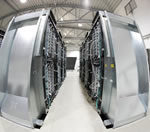Educational institutions have an urgent reason to put data security and backup at the top of their agenda: the rising threat of ransomware. Security firm BlackFog reports that the education sector is now the top target for ransomware attacks, surpassing government and healthcare.
In one recent case, the Los Angeles Unified School District, which has more than 540,000 students and 70,000 employees, suffered a ransomware attack that blocked email, computer systems, and applications. Following the attack, Vice Society, a Russian-speaking group that claimed responsibility for the breach, released a 500GB cache of data that appeared to contain personal information, including passport details, Social Security numbers, and tax forms, according to reports.
A successful cyberattack on a school can have far-reaching and devastating consequences. Not only does it come with a high financial cost, but it also disrupts the core function of education by making resources inaccessible, potentially leading to a loss of sensitive information such as HR and MIS data. Furthermore, it diverts valuable time and resources away from the primary goal of educating students.…Read More


